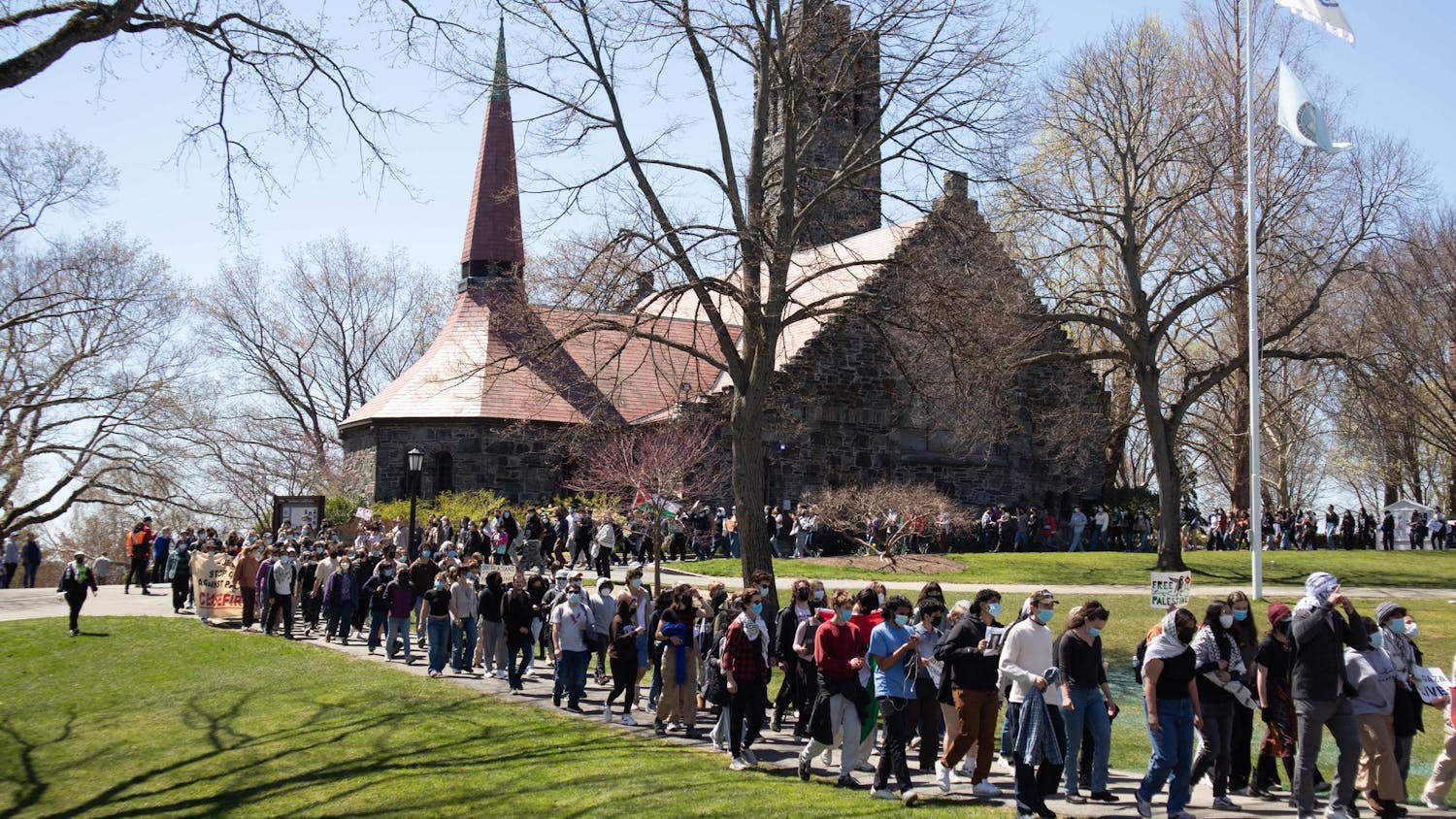I recently took some time to meet with Jumbo on the Academic Quad, but the interview was a bit — well — stiff. So I hit the books instead.
It turns out that ol' Jumbo wasn't always the world icon or beloved mascot we know today. Like most icons preceding him, he had to make his way in the world.
It all started on one portentous day in 1861, when an African elephant was captured on the plains of Abyssinia (now Ethiopia). The elephant was "Operation: Jumbo Dropped" in the Paris Zoo Jardin des Plantes located right next to the ominous Gare d'Austerlitz railway station — a foreboding symbol of the locomotive that would later claim his life.
A regular Hemingway, the elephant sipped absinthe among his fellow Parisian pachyderms and filled his head with silly thoughts of one day joining the circus. During a resplendent lunch-break ceremony at the zoo, a council of zookeepers gave the young elephant his name: "Jumbo," possibly as a variation on the Swahili word "jumbe," meaning "chief." Interestingly, "jumbo" was not an English word in 1861; it was our elephant that added that term to the English lexicon. (WahPOWzah! - I'm working on getting that word added.)
Four years later, Jumbo was transferred to the Royal Zoological Society in London where he developed a penchant for giving young children rides on his back. Yeehaw. Unfortunately, while under the care of a zoologist nicknamed Scotty, Jumbo experienced poor health as he entered a growth spurt and endured some growing pains that I presume only Mike Seaver could relate to. Feeling bad for ol' Jumbo, Scotty slid him a gallon or two of whiskey a day ... you know, for medicinal purposes.
In 1882, Jumbo was sold for $10,000 to P.T. Barnum, owner of "The Greatest Show on Earth." But not so fast, hot-shot; news of Barnum's offer provoked loyal fans, writers and children to question his sale and beg for its reversal. I can hear their whining now. "Puh-puh-puh-weez, don't let Peepee Barnums take Jumbo away." But children were meant to be seen and not heard, so the Royal Zoological Society's superintendent was all, "STFU, you kids" and "Jumbomania" became the buzzword of the day. I wonder what the buzzword of our day is? Probably "Boloco."
Jumbo toured North America with, get a load of this mouth-full, "P.T. Barnum's Greatest Show On Earth, The Great London Circus, Sanger's Royal British Menagerie and The Grand International Allied Shows United" for four seasons. While they probably could have benefited from shortening the show's title, an estimated 20 million people attended, making Jumbo the greatest attraction in "The Greatest Show on Earth" — which is pretty great.
But the good times couldn't last forever. Legend has it that, on Sept. 15, 1885, as the itinerant menagerie of Barnum and Bailey's circus was being loaded onto trains in Ontario, an off-schedule locomotive came careening down the track towards Jumbo and a much smaller elephant named Tom Thumb. In a heroic show of altruism (alcohol-induced bravery), Jumbo was said to have gripped Thumb with his trunk and tossed him 20 yards before taking the locomotive head on. His last words were, "Rawwla larr aaawr!" which may or may not have entered the English-language lexicon. But, man oh man ... what a way to go.
Now, every time I walk along the quad, past that crummy statue of our mascot, I can only think that if Jumbo were alive today, he'd probably be wondering how the hell his name could've gone from meaning chief to standing in for fat-ass. That being said, ladies and gentlefriends, you know I'm not one for hyperbole, but it should be clear that we have the most badass mascot of all time. May his ashes remain undisturbed in that peanut butter jar in the athletic director's office for centuries to come.
--
Michael Goetzman is a sophomore who has not yet declared a major. He can be reached at Michael.Goetzman@tufts.edu.





